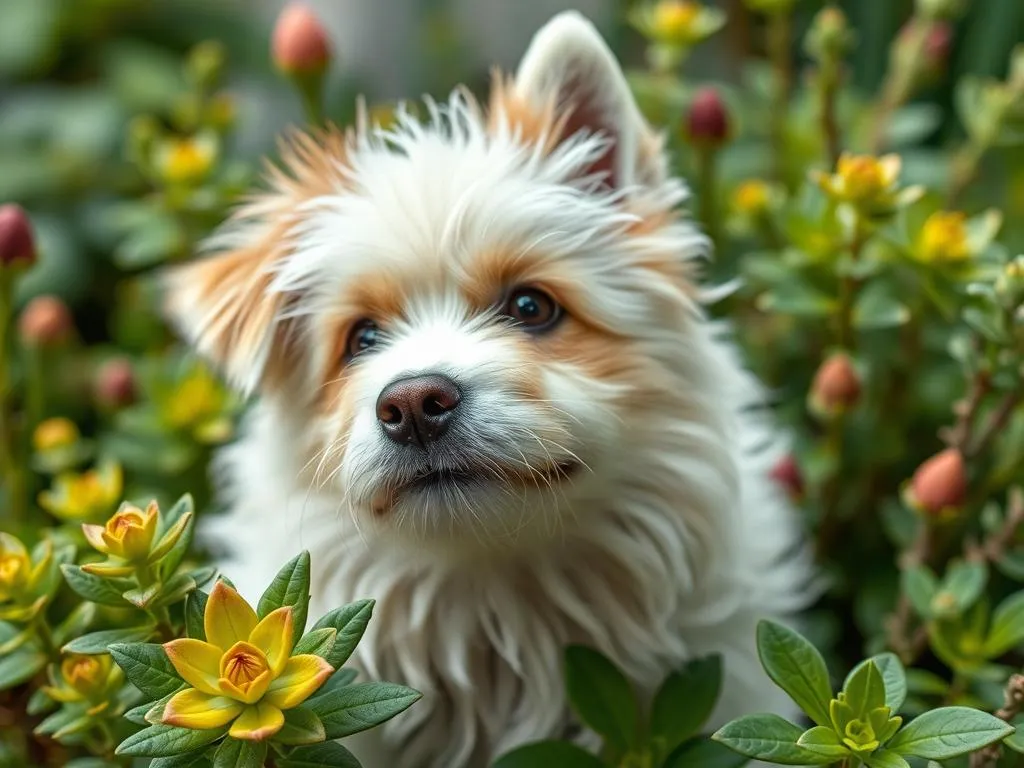
Introduction
As dog owners, ensuring the health and well-being of our furry friends is paramount. Regular vet visits, proper nutrition, and a safe living environment all contribute significantly to your dog’s health care. One often-overlooked aspect of creating a healthy home for dogs is the inclusion of plants. Not all greenery is safe for our pets, which is why understanding plants that are safe for dogs is crucial.
Incorporating safe plants into your home not only enhances the aesthetic appeal but also contributes to your dog’s mental and physical health. This blog post will delve into the importance of dog health care, the role of the environment in a dog’s health, and provide a detailed guide on which plants are safe for dogs.
Understanding Dog Health Care
Importance of Regular Health Check-ups
Regular veterinary visits are essential for maintaining your dog’s health. These check-ups help in identifying potential health issues before they become severe. Vaccinations and preventative treatments are vital components of these visits, protecting your dog from various illnesses. By scheduling regular check-ups, you can ensure that your dog stays up to date on vaccines and receives necessary treatments for heartworm, fleas, and ticks.
Common Health Issues in Dogs
Just like humans, dogs are prone to various health problems. Some prevalent issues include:
- Obesity: A significant concern that can lead to diabetes and joint problems.
- Dental Problems: Many dogs suffer from dental diseases, which can affect their overall health.
- Allergies: Dogs can be allergic to numerous substances, including certain foods and environmental factors.
Early detection of these issues is crucial for successful treatment and management, highlighting the importance of regular health care.
Nutrition and Diet for Optimal Health
A balanced diet is the cornerstone of good health for dogs. It’s essential to provide them with key nutrients, including:
- Proteins: For muscle development and repair.
- Fats: For energy and healthy skin.
- Vitamins and Minerals: For promoting overall body function.
Consulting with your veterinarian can help you determine the best diet tailored for your dog’s specific needs.
The Role of Environment in Dog Health
Creating a Safe Living Space
Creating a safe environment for your dog is crucial for their well-being. This involves identifying and eliminating common household hazards such as toxic substances, sharp objects, and small items that could be ingested. Dog-proofing your home can prevent accidents and keep your furry friend safe.
Incorporating Plants into Your Home
Plants can significantly benefit both dogs and their owners. They improve air quality, promote mental well-being, and create a more vibrant living space. However, it is crucial to choose plants that are safe for dogs to avoid any health risks.
Plants That Are Safe for Dogs
Overview of Safe Plants
When selecting plants for your home, always opt for non-toxic varieties. Non-toxic plants are those that do not pose a risk when ingested by dogs. Here are some general guidelines for selecting dog-safe plants:
- Research plant varieties before bringing them home.
- Choose plants that are less likely to be chewed on by curious pets.
- Consult your veterinarian for recommendations on safe plants.
List of Dog-Safe Plants
Indoor Plants
-
Spider Plant: Known for its air-purifying qualities, the spider plant is safe for dogs and easy to care for.
-
Boston Fern: This lush plant thrives in humidity and is non-toxic to pets, making it a great addition to homes.
-
Parlor Palm: A beautiful, low-maintenance plant that can tolerate low light conditions and is safe for dogs.
-
Bamboo Palm: Another non-toxic option, the bamboo palm can help improve indoor air quality while being safe for your furry friend.
Outdoor Plants
-
Marigold: Not only are marigolds beautiful, but they also repel pests and are safe for dogs.
-
Snapdragons: These colorful flowers are non-toxic and can add a splash of color to your garden.
-
Calendula: Known for its medicinal properties, calendula is safe for dogs and can be used in homemade dog treats.
-
Nasturtium: This vibrant plant is edible and safe for dogs, making it a fun addition to your garden.
Herbs That Are Safe for Dogs
-
Basil: This fragrant herb is not only safe for dogs but also has anti-inflammatory properties.
-
Rosemary: A great culinary herb, rosemary can also support digestion and is safe for dogs.
-
Thyme: An excellent addition to your herb garden, thyme is non-toxic and can offer various health benefits.
-
Parsley: Safe for dogs and beneficial for freshening breath, parsley is an excellent herb to keep on hand.
Benefits of These Plants
Each of these plants offers various health benefits, including:
- Air Purification: Many of these plants help filter indoor air pollutants.
- Stress Reduction: Having greenery around can reduce stress for both dogs and their owners.
- Natural Remedies: Some herbs can be used in dog care, from treating minor ailments to enhancing their diet.
Identifying Toxic Plants for Dogs
Common Toxic Plants to Avoid
It’s essential to be aware of common plants that can be harmful or fatal to dogs. Some notorious toxic plants include:
- Lilies: Extremely toxic to dogs and can cause kidney failure.
- Sago Palm: All parts are toxic and can lead to severe liver damage.
- Azaleas: Can cause vomiting, diarrhea, and even coma if ingested.
- Oleander: Highly toxic and can be fatal if consumed.
Recognizing the signs of plant toxicity in dogs is crucial. Symptoms may include vomiting, diarrhea, lethargy, and unusual behavior.
What to Do If Your Dog Ingests a Toxic Plant
If you suspect that your dog has ingested a toxic plant, take immediate action:
- Stay Calm: Your dog can sense your anxiety.
- Remove Access: Ensure your dog cannot access any more of the plant.
- Contact a Veterinarian: Provide details about the plant and any symptoms your dog is exhibiting. Time is of the essence.
Tips for Dog Owners
How to Choose the Right Plants
When selecting plants for your home, consider the following factors:
- Size: Choose plants that fit your available space without being overwhelming.
- Light Requirements: Ensure that the plants you select can thrive in your home’s lighting conditions.
- Maintenance: Some plants require more care than others; choose according to your gardening experience.
Always do thorough research on plant safety before introducing new plants into your home.
Maintaining a Dog-Friendly Garden
Creating a dog-friendly garden requires thoughtful planning and consideration. Here are some safe gardening practices:
- Use non-toxic fertilizers and pesticides.
- Create designated play areas for your dog.
- Avoid sharp tools and equipment that could pose risks.
Recommended landscaping ideas include using raised beds for flowers and herbs and providing shaded areas for your dog to relax.
Educating Others About Dog Safety
Share your knowledge of dog safety with family and friends. Encourage them to understand which plants are safe for dogs and advocate for dog safety in the community. By spreading awareness, you can contribute to creating a pet-friendly environment for all.
Conclusion
Understanding dog health care is essential for every dog owner. Incorporating plants that are safe for dogs into your home can enhance your dog’s quality of life while providing numerous health benefits. By taking proactive steps, you can ensure your dog’s safety and well-being. Remember, the right plants can create a vibrant living space that both you and your dog can enjoy.
Share your knowledge about dog health care and safe plants with fellow dog owners, and contribute to a community that prioritizes pet safety and well-being.









